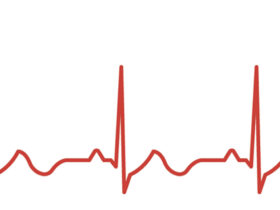By Amanda N. Sacino, MD-PhD . Neurosurgeon and Managing Partner
Back pain is a pervasive and often debilitating condition that affects millions of people worldwide. Understanding the underlying causes of back pain and exploring effective treatment options are essential for managing this common ailment. This article delves into the main causes of back pain, ranging from musculoskeletal issues to underlying medical conditions, and examines various treatment modalities aimed at providing relief and restoring functionality.
Common Causes of Back Pain:
1. Muscular Strain and Sprain: Muscular strain or sprain is one of the most prevalent causes of back pain. Activities such as lifting heavy objects, sudden movements, or poor posture can strain the muscles and ligaments in the back, leading to pain and stiffness. Overuse injuries, repetitive motions, and inadequate conditioning of the back muscles can exacerbate this condition.
2. Herniated Disc: Intervertebral discs act as cushions between the vertebrae, providing flexibility and shock absorption to the spine. A herniated or slipped disc occurs when the soft inner core of the disc protrudes through the tough outer layer, irritating nearby nerves and causing back pain. This condition often results from age-related degeneration, trauma, or excessive strain on the spine.
3. Degenerative Disc Disease: Degenerative disc disease is a progressive condition characterized by the breakdown of intervertebral discs over time. As discs lose hydration and elasticity, they become less effective at absorbing shock and maintaining spinal alignment, leading to pain and stiffness in the back. Factors such as aging, genetics, and lifestyle choices can contribute to the development of this condition.
4. Spinal Stenosis: Spinal stenosis is a narrowing of the spinal canal or neural foramina, the openings through which nerves exit the spinal cord. This narrowing can compress the spinal cord or nerve roots, causing pain, numbness, and weakness in the back and legs. Spinal stenosis may result from age-related changes, such as bone spurs or thickened ligaments, or conditions like arthritis or spinal tumors.
5. Spondylolisthesis: Spondylolisthesis is a condition in which one vertebra slips forward or backward in relation to an adjacent vertebra. This displacement can compress spinal nerves, leading to back pain, sciatica, and muscle weakness. Spondylolisthesis can be congenital or acquired and is often associated with repetitive stress, trauma, or degenerative changes in the spine.
Effective Treatments for Back Pain:
1. Physical Therapy and Exercise: Physical therapy aims to strengthen the muscles supporting the spine, improve flexibility, and correct posture to alleviate back pain and prevent recurrence. Exercise programs tailored to individual needs can include stretching, strengthening exercises, and low-impact aerobic activities to promote healing and rehabilitation.
2. Medications: Over-the-counter pain relievers such as ibuprofen, acetaminophen, or naproxen can help reduce inflammation and alleviate mild to moderate back pain. In cases of severe or chronic pain, prescription medications such as muscle relaxants, opioid analgesics, or antidepressants may be prescribed under medical supervision.
3. Bracing: A medically fitted back brace will provide support to the spine, especially during activities that can exacerbate muscular strain and sprain, and spondylolisthesis. The bracing also reminds patients not to engage in movements that can be harmful to the spine such as extreme bending and twisting.
4. Injections: Epidural steroid injections deliver anti-inflammatory medications directly to the affected area of the spine, providing temporary relief from pain and inflammation associated with conditions like herniated discs or spinal stenosis. Other types of injections, such as facet joint injections or nerve blocks, target specific sources of pain in the spine.
5. Minimally Invasive Procedures: Minimally invasive procedures such as percutaneous discectomy, radiofrequency ablation, or spinal cord stimulation may be recommended for individuals with persistent or severe back pain that does not respond to conservative treatments. These procedures involve targeted interventions to relieve pain and improve function while minimizing tissue damage and recovery time.
6. Surgery: In cases where conservative treatments fail to provide adequate relief or there is evidence of structural damage requiring surgical intervention, various surgical procedures may be considered. These may include discectomy, laminectomy, spinal fusion, or artificial disc replacement, depending on the underlying cause and severity of the back pain.
Conclusion: Back pain can significantly impact daily life and functionality, but with proper diagnosis and treatment, many individuals can find relief and improve their quality of life. Understanding the root causes of back pain and exploring a combination of conservative treatments, minimally invasive procedures, and surgical options tailored to individual needs can help individuals effectively manage this common condition and return to an active, pain-free lifestyle.
About Amanda Sacino, MD, PhD
Dr. Sacino was born and raised on the east coast of Florida. After securing her undergraduate degree at Boston Unversity, she returned to her home state and attended the University of Florida, where she obtained her medical and post-doctorate degrees.
Her PhD work focused on proteinopathies, mainly Parkinsonism. But her mentors recognized her surgical precision skills, and so Dr. Sacino pursued extensive training in cranial, spine, and peripheral nerve surgery at Johns Hopkins Hospital. From there, she completed two spine fellowships at Johns Hopkins Hospital and the Swedish Neuroscience Institute. Her surgical spine training includes experience with degenerative diseases, congenital diseases, deformity, oncology, and trauma.
Dr. Sacino trained under Dr. Nicholas Theodore, the inventor of the Globus ExcelsiusGPS robot. She was present during the first robotic surgery at Johns Hopkins and trained extensively for five years with the robot during both spine and cranial cases.
Dr. Sacino’s high standards and pursuit of quality has led her to become well-respected by her mentors and peers. Her goal is to provide patients with case-specific solutions so they have all the information and options they need to make informed decisions.
239-422-APEX (2739)
3530 Kraft Road, Suite 203 • Naples, FL 34105
www.apexbrainandspine.com









